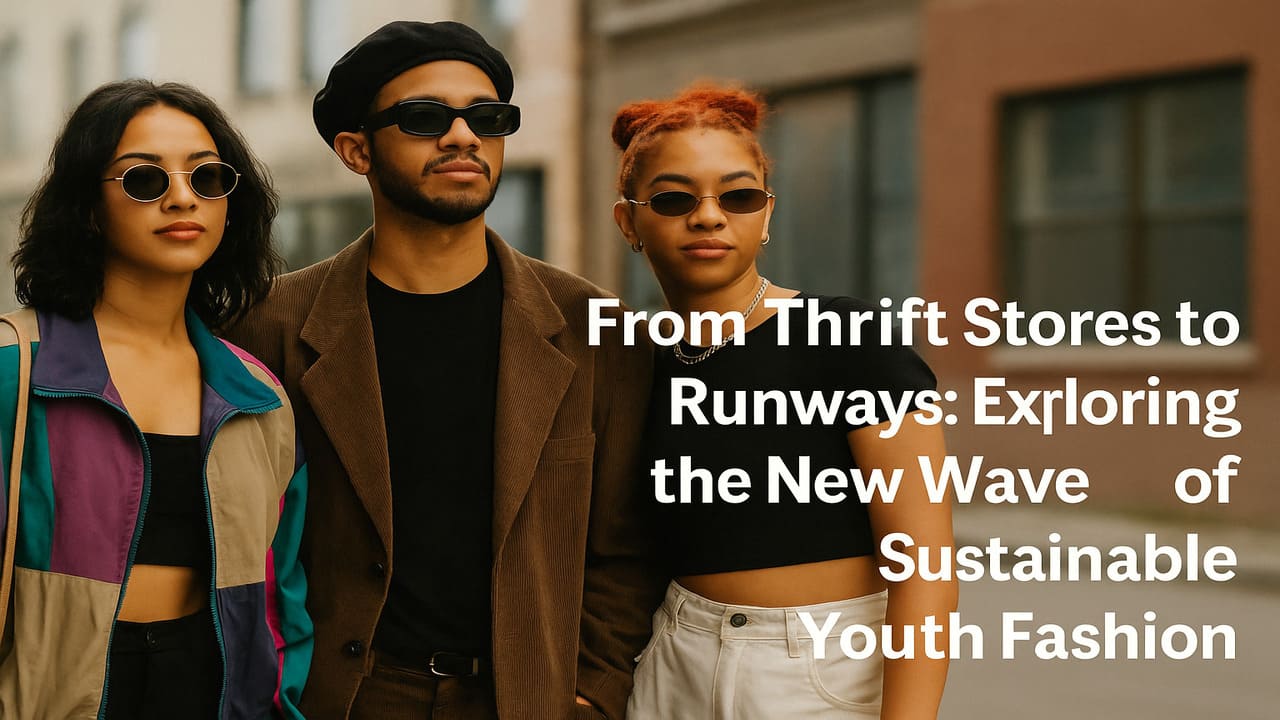
The Berkshire Mall – In recent years, the fashion world has witnessed a major shift in how style is defined and it’s largely being driven by a younger generation that values not only aesthetic, but also ethics. From TikTok influencers to campus creatives, young people today are boldly rejecting fast fashion in favor of sustainability, individuality, and authenticity. One of the most prominent expressions of this movement can be seen in the rise of Thrift Stores. What was once considered budget shopping has now become a symbol of creativity and social consciousness.
At the heart of this sustainable wave is a desire for originality. Thrift stores offer access to one-of-a-kind pieces that allow young people to stand out in a world. Where mass production often dictates uniform trends. Whether it’s an oversized ‘90s windbreaker, a retro band tee, or a vintage leather jacket. Thrifted fashion pieces carry a story and that story becomes part of the wearer’s identity.
Social media platforms like Instagram, Pinterest, and TikTok have fueled this trend. With users proudly sharing “thrift hauls” and transformation videos showing how they styled or altered pre-loved items. It’s more than just fashion it’s a form of digital storytelling. Often laced with a deeper message about mindful consumption and creativity.
For many Gen Z and late millennials, wearing thrifted clothing is a subtle act of rebellion against consumer culture. It’s a way of saying, “I don’t need to buy new to be stylish.”
Read More : Celebrate National Cheese Day with These Healthy Cheese Picks
Interestingly, what started in neighborhood thrift stores is now influencing mainstream fashion houses. Luxury brands have begun tapping into the language and look of vintage fashion. Offering “archival” collections or collaborations that mimic secondhand aesthetics.
Major runway events in recent years have featured upcycled materials, deconstructed silhouettes, and capsule collections inspired by classic, pre-worn styles. Designers like Stella McCartney, Marine Serre, and Collina Strada have made sustainability a focal point not just a buzzword.
This shift indicates a growing respect for circular fashion, where the lifecycle of clothing is extend through reuse, resale, and repurposing. It also reflects a greater demand from younger consumers who are more likely to ask where and how their clothes were made.
Beyond simply wearing thrifted clothes, many youths are reworking their finds into personalized pieces. DIY fashion cutting, sewing, dyeing, and accessorizing is enjoying a renaissance. Tutorials on how to turn oversized jeans into cargo pants, or how to crop and fringe old T-shirts, are spreading quickly across platforms like YouTube and TikTok.
This hands-on approach not only promotes sustainability by reducing waste, but it also empowers individuals to view fashion as something participatory rather than passive. Clothing becomes a canvas for artistic experimentation and cultural statement.
It’s also worth noting that this trend fosters a sense of ownership and pride. Wearing a jacket you’ve customized yourself doesn’t just make you feel unique it also deepens your relationship with your wardrobe, making you less likely to discard pieces impulsively.
Read More : Seasonal Fashion You’ll Love: Berkshire Mall’s Best Outfits from Head to Toe
Rather than closing with a general summary, let’s spotlight an evolving topic that fuels this movement: community-driven fashion support.
In cities around the world, pop-up thrift markets, swap events, and maker spaces are becoming essential hubs for young fashion innovators. In places like Los Angeles, Berlin, and even smaller towns, collaborative studios allow teens and twenty-somethings to learn basic tailoring, upcycling skills, and sustainable design practices.
These local initiatives reinforce the message that fashion doesn’t have to be exclusive or exploitative. By investing in youth-centered spaces and sustainable education, communities are not only encouraging eco-consciousness but also incubating the next generation of designers, stylists, and cultural influencers.
The result? A future of fashion that’s not only innovative and expressive but deeply responsible.